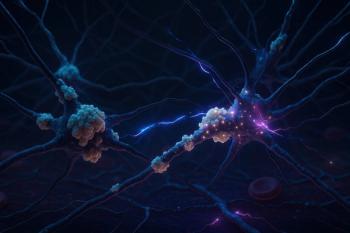
A Whirlwind Tour of OUD Treatment Strategies
Opioid use disorder—how can we battle the epidemic of overdoses?
CONFERENCE REPORTER
“Our task in the next 20 minutes is to go through a whirlwind tour of the treatments for opioid use disorder [OUD],” Edward V. Nunes, MD, told attendees of the
Medication is the cornerstone of treatment for OUDs, and psychiatrists are the experts in this area, explained Nunes, who is professor of psychiatry at Columbia University Irving Medical Center, research psychiatrist at New York State Psychiatric Institute, and principal investigator of the Greater New York Node of the National Institute on Drug Abuse (NIDA) Clinical Trials Network. Unfortunately, most people with OUDs are not receiving effective medication treatment. This may be why there is a high mortality rate (1% annually), due largely to overdose and suicide. There are currently 3 main options available: methadone, buprenorphine, and extended release injection naltrexone, Nunes noted.
Methadone is an oral full opioid agonist with slow absorption and a slow elimination (ie, long half-life).When titrated to an effective dose range of at least 80 mg/day, it induces tolerance in the brain’s opioid system, which results in a tolerance blockade for illicit opioid. “So when a patient gets up on a dose of
Importantly, methadone is effective, not just in efficacy but also with retention, Nunes said. In clinical trials lasting more than 6 months, 70% of patients were retained. Of those, he noted 50% were found to be in sustained abstinence. “Most importantly, because of inducing tolerance, it protects against overdose and death,” Nunes added.
There are limitations to this strategy, Nunes told attendees, with accessibility and acceptability being important issues. Methadone is only available in
Nunes noted methadone clinics run a little differently outside of the United States. “Other countries, including Canada, have more flexible models such as primary care and pharmacy based methadone,” he explained. “So, hopefully in the future the United States will begin working with some of these models to make it widely available. In the meantime, if you have a methadone clinic in your community, by all means, think about referring for methadone maintenance.”
Buprenorphine maintenance is a second option for addressing OUDs.
Like methadone, there are some limitations to this treatment, Nunes noted. Retention is less favorable with buprenorphine, with rates close to 40% to 50% over 6 months. Ironically, he said because there is less tolerance and less withdrawal, it is easier for patients to walk away from treatment, so clinicians have to work harder to motivate patients to stay with the program. Similarly, patients need to abstain from opioids long enough to manifest withdrawal symptoms before initiating treatment. At that time, he explained a test dose is used. There are microdosing strategies available if you want to start sooner, Nunes noted.
Overall, both methadone and buprenorphine are effective strategies, Nunes said. “There's going to be some ongoing drug use, and that's grist for the mill. But these medicines are very powerful at reducing and often eliminating the opioid use,” he told attendees. Younger age and severity of OUD are associated with worse adherence and therefore worse outcomes, he added. “Staying on methadone or buprenorphine is what predicts long term abstinence severity.”
Naltrexone, another high affinity opioid receptor antagonist, binds to the opioid receptors very tightly, and actually blocks the effects of other opioids, Nunes explained. Further good news is limited adverse effects; he reported that patients generally feel well on naltrexone. However, patients must be fully detoxified before initiating treatment, he said, which present a real barrier, especially for more severe patients. This results in the need to hospitalize patients, which is a limitation. Another option, Nunes explained, was to induce with ascending doses of naltrexone and clonidine and other nonopioid medications that attenuate withdrawal. Once initiation is successful, natrexone’s efficacy is comparable with buprenorphine. Nunes noted naltrexone should be accompanied by strong motivational counseling.
“Pay close attention to overdose risk when choosing
Nunes reminded attendees to consider psychosocial treatment and counselling. Not only is psychosocial treatment a requirement for methadone, but it also provides what may be much-needed structure. Inpatient and residential treatment may be especially helpful because it removes the patient from toxic environments as well as access to drugs. Plus, it also provides an opportunity to initiate the aforementioned medications.
Ultimately, Nunes told attendees treating OUDs is not unlike leveraging other psychopharmacological treatments. He reminded clinicians to keep it simple and remember the 3 As:
Abstinence
Adherence to medications, and
Adherence to psychosocial treatments.
Newsletter
Receive trusted psychiatric news, expert analysis, and clinical insights — subscribe today to support your practice and your patients.











